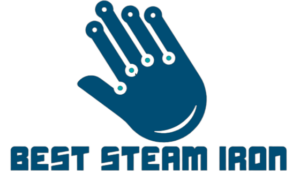By effectively cleaning and preparing plastic bottles for reuse, a plastic bottle washing line plays a crucial role in recycling operations. Sorting, shredding, washing, and drying methods are all included in those lines, which typically have more than one tier. To handle a variety of plastic bottles, each stage has been meticulously designed to ensure thorough cleaning while consuming as little power and water as possible.
The reliability of a plastic bottle washing line is paramount to its effectiveness in recycling operations. Top-notch washing strains are built with sturdy substances and superior technology to resist the rigorous demands of continuous operation. The plastic bottle washing line contains features like automatic sorting mechanisms, adjustable washing parameters, and efficient water filtration systems to optimize performance and meet cleanliness requirements.
The Plastic Bottle Washing Line’s Operating Procedure
Right here’s a detailed evaluation of the way a normal plastic bottle washing line works:
Sorting and Pre-Treatment
In the sorting and pre-treatment degree of a plastic bottle washing line, incoming bottles are meticulously looked after by using kind and color sensors and guided inspection. Labels and caps are then effectively removed using shredders and separators to prepare the bottles for the next processing. This preliminary step ensures that the handiest suitable materials proceed similarly into the showering and cleaning tactics, optimizing the performance and effectiveness of the recycling operation.
Size Reduction and Washing
In the size reduction and washing degree of a plastic bottle washing line, shredded bottles undergo a thorough cleaning process. To begin with, bottles are shredded into smaller portions to boost floor area for powerful washing. These plastic flakes then undergo pre-washing to eliminate massive contaminants and residues. Ultimately, they input friction washers where they’re intensively wiped clean with detergent and water, ensuring the removal of dirt, oil, and different contaminants to put together them for in addition processing.
Friction Washing
An important step in the plastic bottle washing line is friction washing, which thoroughly cleans shredded plastic flakes. In this approach, the flakes are agitated at a high pace in a chamber packed with detergent and water. This agitation successfully removes contaminants such as labels, adhesives, dirt, and oils from the plastic flakes. A few structures can also consist of warm water to enhance the cleaning process similarly, making sure that the flakes are very well wiped easily and prepared for the next stages of recycling.
Separation and Drying
In the separation and drying degree of a plastic bottle washing line, smooth plastic flakes undergo similar processing to remove any remaining impurities. Density separation techniques, frequently utilizing flotation tanks, separate smooth plastic flakes from heavier contaminants based on their densities. After separation, the plastic flakes are subjected to centrifugal drying, where high-velocity spinners take away excess water from the flakes. This ensures that the plastic flakes are very well wiped clean and dried, prepared for the next steps within the recycling system.
Filtration and Final Quality Control
Within the filtration and final fine management degree of a plastic bottle washing line, filtered water from the bathing procedure is purified to eliminate high-quality debris and contaminants. This water is regularly recycled for use in subsequent washing cycles, promoting sustainability. Meanwhile, the wiped-clean plastic flakes undergo rigorous quality inspections to ensure they meet targeted cleanliness and other requirements. Visible and automated tests verify that the flakes are free of impurities, ensuring excellent output for pelletizing and recycling.
Pelletizing
In the pelletizing level of a plastic bottle washing line, cleaned plastic flakes are melted and extruded through a die to shape small pellets. This system entails heating the flakes to a molten state, after which they are forced via an extruder, which shapes the molten plastic into cylindrical pellets. After extrusion, the pellets are cooled and solidified, ready for storage or transportation. Pelletizing transforms the cleaned plastic flakes into a standardized form that can be effortlessly melted and reused in manufacturing processes.
Summary
Plastic bottle-washing lines are sophisticated structures that successfully clean and prepare used bottles for recycling. Through processes like sorting, washing, drying, and pleasant management, these strains drastically reduce plastic waste and promote sustainability in recycling. By way of making sure that wiped-clean plastic flakes meet brilliant standards, these approaches enable the fabric to be efficiently reused in production. Ultimately, plastic bottle washing lines are pivotal in advancing environmental stewardship and useful resource conservation efforts globally.




